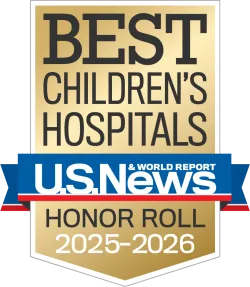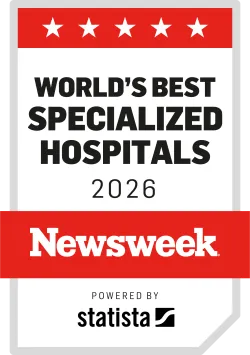Fetal cardiac intervention
A small number of babies with hypoplastic left heart syndrome may benefit from intervention before birth. Our highly trained cardiologists can use a needle or tiny balloon catheter to open abnormal heart valves or other obstructions. Learn more about the Fetal Cardiology Program.
Medical treatment after birth
If fetal intervention is not an option for your baby, treatments after birth will focus on stabilizing your baby and may include:
- Medication to keep the patent ductus arteriosus (PDA) open
- Intravenous fluids through a tube inserted into a vein
- A feeding tube if your baby has difficulty feeding
- Breathing assistance provided by a ventilator to ensure adequate oxygen
- A balloon atrial septostomy procedure to create an opening in the wall between the upper chambers of the heart to improve mixing of oxygen-rich blood and oxygen-poor blood
Shortly after birth, your child’s care team will take images of your baby’s heart using an echocardiogram to see every detail of your baby’s heart — the way the blood flows, the size and function of the ventricles, and how well the valves work.
Surgery
Your child will usually need a series of three operations. The goal of these surgeries is to enable the fully-functioning right ventricle to do the work normally done by two ventricles and to separate the oxygen-rich blood from the oxygen-poor blood.
Biventricular repair
In some cases, a baby’s single ventricle heart can be converted into two functioning ventricles (biventricular circulation) through our Complex Biventricular Repair Program. This may be an option for children with borderline HLHS. In some situations, this repair can be the initial procedure, but in others, a series of procedures may be used to recruit the small left ventricle before converting the heart to biventricular circulation.
Home monitoring between stages 1 and 2
During the period between stage 1 and stage 2 surgeries, your baby’s heart circulation requires extra monitoring to prevent complications. Our Home Monitoring Program will give you goals for your baby’s growth and oxygen saturation levels and provide monitoring equipment for your baby. You’ll also get information on when to call.





